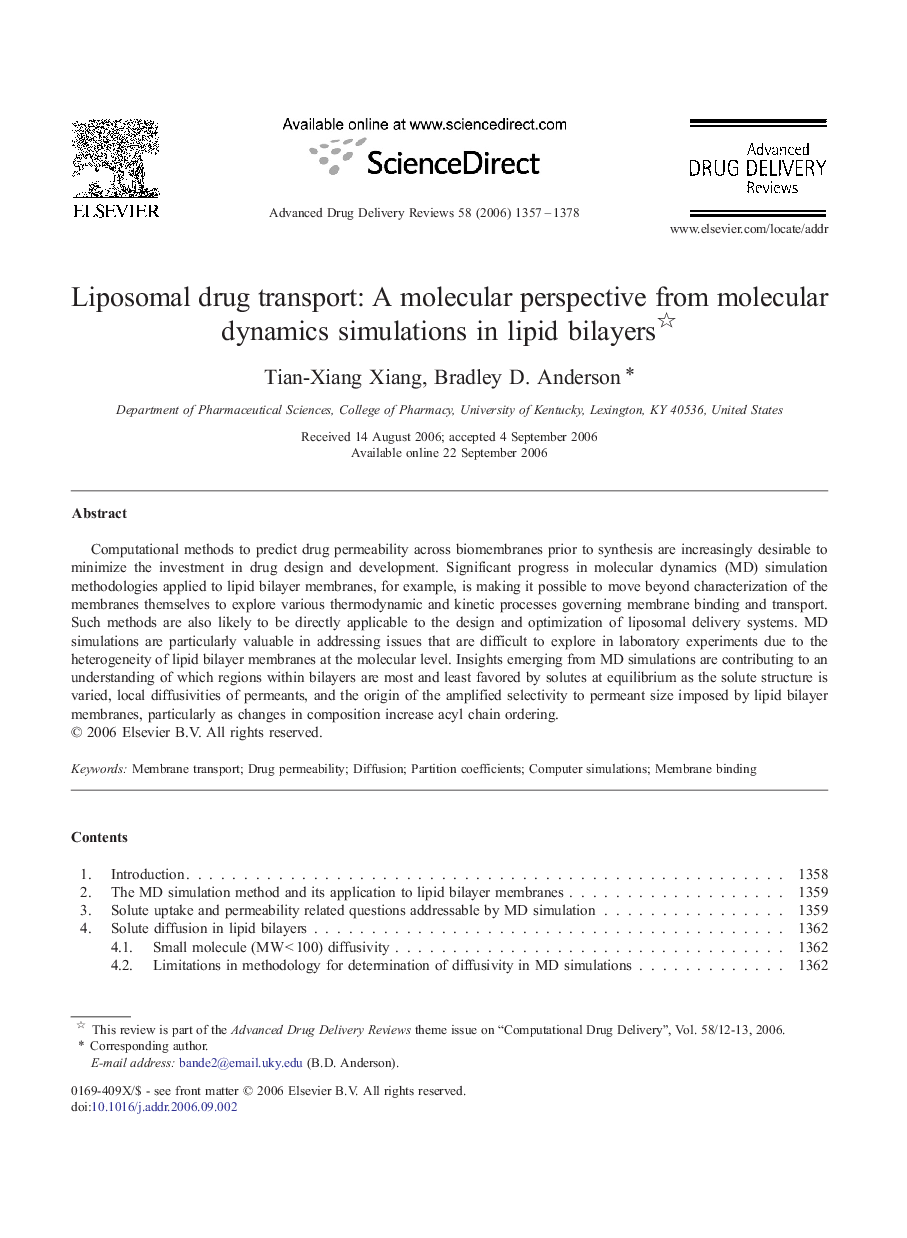| Article ID | Journal | Published Year | Pages | File Type |
|---|---|---|---|---|
| 2072035 | Advanced Drug Delivery Reviews | 2006 | 22 Pages |
Computational methods to predict drug permeability across biomembranes prior to synthesis are increasingly desirable to minimize the investment in drug design and development. Significant progress in molecular dynamics (MD) simulation methodologies applied to lipid bilayer membranes, for example, is making it possible to move beyond characterization of the membranes themselves to explore various thermodynamic and kinetic processes governing membrane binding and transport. Such methods are also likely to be directly applicable to the design and optimization of liposomal delivery systems. MD simulations are particularly valuable in addressing issues that are difficult to explore in laboratory experiments due to the heterogeneity of lipid bilayer membranes at the molecular level. Insights emerging from MD simulations are contributing to an understanding of which regions within bilayers are most and least favored by solutes at equilibrium as the solute structure is varied, local diffusivities of permeants, and the origin of the amplified selectivity to permeant size imposed by lipid bilayer membranes, particularly as changes in composition increase acyl chain ordering.
